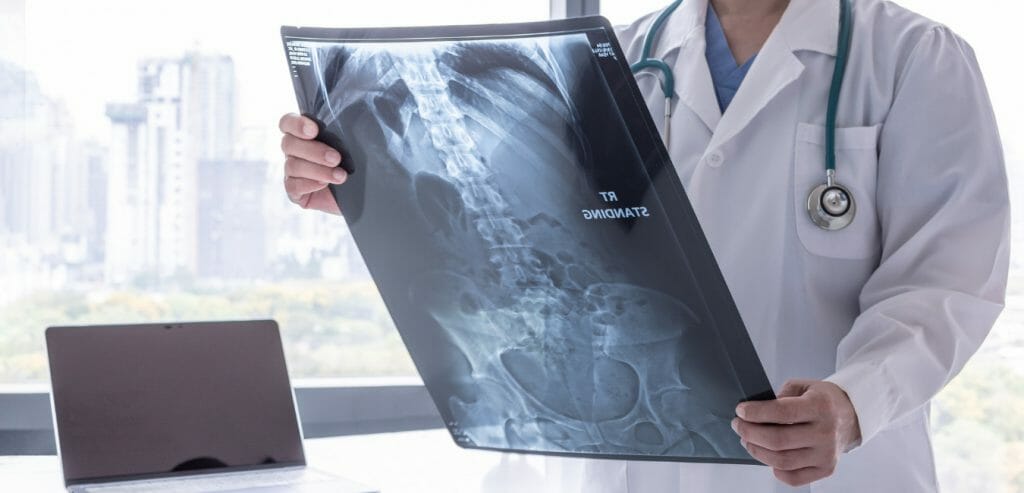If you were diagnosed with osteoporosis, you may have a lot of questions. How will this affect my daily life? How do I deal with this diagnosis? How will I manage my symptoms?
Osteoporosis is a serious disease but people who have this condition can still live fulfilled lives. If you received an osteoporosis diagnosis, our doctors at St. Paul Rheumatology can help you stay healthy and make sense of this disease.
What is Osteoporosis?
Osteoporosis is a bone disease. It occurs when the body doesn’t make enough bone, loses too much bone, or both. Bones become weak and are more prone to break in the event of a fall due to this reduction bone remodeling – the bone growth process.
Healthy bone looks like a honeycomb when viewed under a microscope. In bone affected by osteoporosis, the holes in the honeycomb become larger than in healthy bone, effectively weakening its construction (National Osteoporosis Foundation.)
People with osteoporosis tend to fracture their spine, hips, ribs, and wrists most commonly. Osteoporosis is referred to as a “silent disease,” meaning it doesn’t cause many outward signs or symptoms. The disease develops over time and the person might not realize they have it until they break a bone, lose height, or develop a hump in their lower back. Other symptoms may include tooth loss or back pain (Arthritis Foundation.)
The disease can cause permanent pain but there are ways to manage osteoporosis. Our doctors at St. Paul Rheumatology will work with you to determine the best course of action to manage your symptoms and reduce your risk for bone fracture.
Who is at Risk for Osteoporosis?
People aged 65 and older are one of the most vulnerable groups for osteoporosis. Bone remodeling naturally slows down as a person ages, which creates a higher risk for osteoporotic fractures. Women are typically at a higher risk than men because their bones are naturally thinner and have lower bone mass. Female menopause and low testosterone in males can also affect bone growth and lead to osteoporosis (Spine-health.)
Anyone who has a family history of the disease or who has noticed risk factors of osteoporosis should discuss their risk of getting it with their primary care physician or one of our doctors at St. Paul Rheumatology.
How is Osteoporosis Diagnosed?
A doctor will most likely order a bone density scan to diagnose a patient with osteoporosis. This exam measures the bone mineral density in the body. The test uses dual-energy x-ray absorptiometry (DXA or DEXA) or bone densitometry. The DXA machine measures the amount of x-rays the tissues and bone in the body absorbs (RadiologyInfo.org.)

How will Osteoporosis Affect Your Life?
Dealing with an osteoporosis diagnosis can be intimidating and scary. Our doctors at St. Paul Rheumatology are here to help you make sense of the disease. For more information about how to deal with an osteoporosis diagnosis, click here to read our article, “You Got an Osteoporosis Diagnosis – Now What?”
References
ACR, R. S. N. A. and. (2019, August 1). Osteoporosis. Radiologyinfo.org. https://www.radiologyinfo.org/en/info/osteoporosis.
Learn What Osteoporosis Is and What It’s Caused by. National Osteoporosis Foundation. (2021, April 12). https://www.nof.org/patients/what-is-osteoporosis/.
Osteoporosis: Arthritis Foundation. Osteoporosis | Arthritis Foundation. (n.d.). https://www.arthritis.org/diseases/osteoporosis.
Scott Curtis, D. O. (n.d.). Who Is at Risk for Osteoporosis? Spine. https://www.spine-health.com/conditions/osteoporosis/who-risk-osteoporosis.
